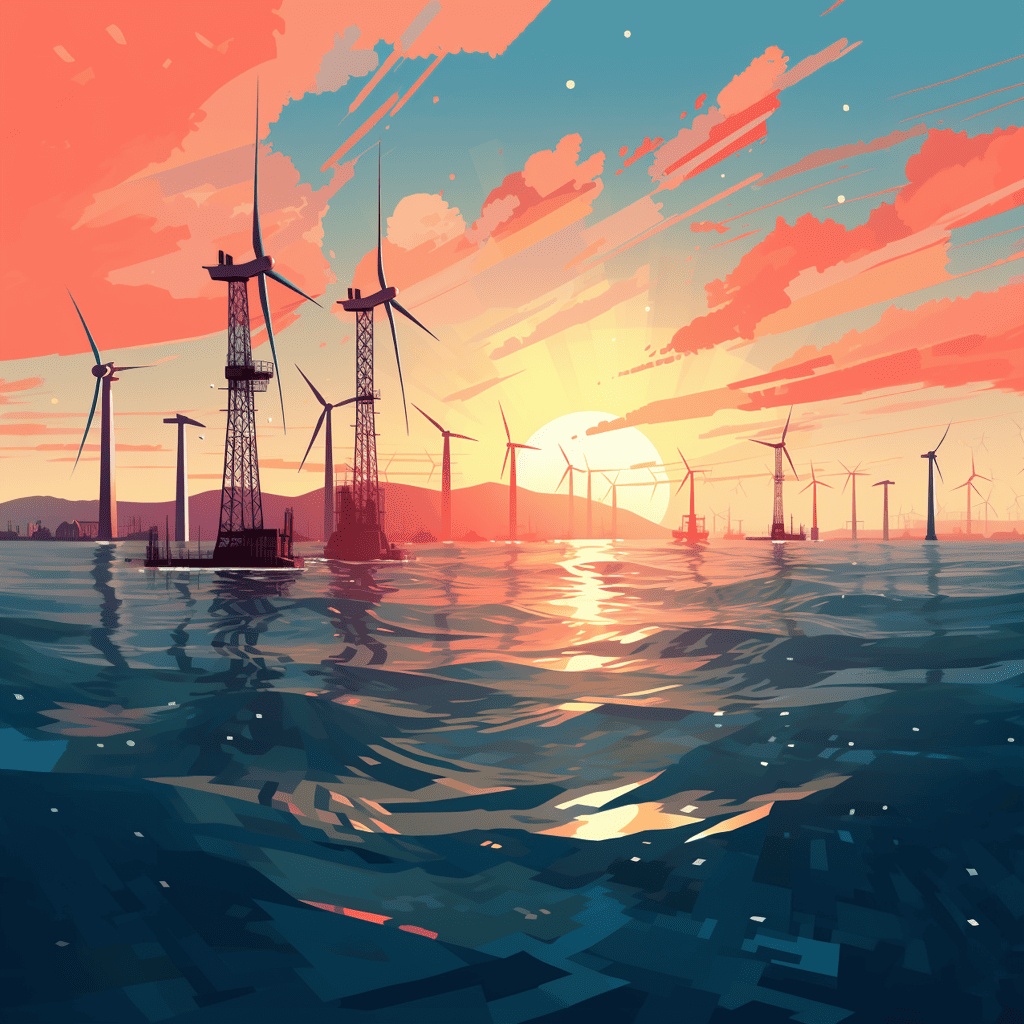
The fine vistas from the beach would have you believe otherwise, but the North Sea is a very busy expanse. Space is needed for shipping, fishing, military exercises, recreation, and, of course, nature. Moreover, the North Sea plays a major role in the transition to a sustainable economy. It is a perfect area for generating renewable energy through offshore wind farms, floating solar parks, and wave power plants. Also, in the future, we are probably going to grow seaweed and seafood on a larger scale to provide a more sustainable diet. All these applications and the companies involved are converging at sea. Good digital communication is the key to successful collaboration. Only that is not yet that easy to achieve.
- The North Sea offers opportunities for renewable energy and sustainable food production.
- Current analog communications at sea are inadequate for growing communications needs such as sensors for renewable energy.
- CFNS is testing various technologies, including a test buoy project and research into 5G coverage.
In order to explore the opportunities for digital communication at sea and to test innovations, Fred Hage, together with Wiebrand Bouwkamp, set up the Connectivity Fieldlab North Sea (CFNS) at Rijkswaterstaat (the executive agency of the Dutch Ministry of Infrastructure and Water Management). “The digitalization of society, business, and government is advancing very fast, but at sea, it is lagging behind,” says Hage, CFNS program manager. Whereas telecom technology generations 4G and 5G have since become an integral part of our daily lives on land, deploying them is more complicated in marine waters at sea. After all, high-bandwidth 5G needs a lot of masts. That is difficult to achieve on water, so we have to look at other solutions.
This is an article from IO Next: The Year Of… For the last magazine of this year, we selected the articles that stuck with us the most, whether it was an impressive interview, an important story or just something funny.

Why Linda chose to make a follow-up on this story:
Communication at sea is not the first thing that pops into your mind when it comes to new technologies like 5G. Yet, it is crucial for a safe and sustainable future. I discovered it while creating this article in collaboration with CFNS. For the first version – written in February 2023 – I went to the Rijkswaterstaat office in Stellendam on Goeree-Overflakkee (in the province of Zeeland in the Netherlands). In a meeting room with a sea view, I listened to several presentations on CFNS projects. Especially for this magazine, I sat down again with Fred Hage. It is fascinating to follow the developments because technology does not stand still.
From analog to digital
At present, communication at sea is still done by means of analog technology. “To give an example, that technology is not even enough to handle SMS,” Hage elaborates. That system is just not adequate anymore as the sea gets busier, with the arrival of wind turbines and crates for shellfish farming. After all, the need for connectivity and communication, for example, through sensors, is also growing accordingly. Hence, there’s the need for a smarter system to enable the integration of these sensors and of Internet of Things devices, too. “We have to use space at sea as efficiently as possible. Good communication is indispensable then,” he maintains.
Also, if high-performance, digital communication is possible at sea, it has plenty more uses. “Then you can envisage that more and different kinds of sensors will be attached to floating solar parks to also directly monitor data on, for example, water quality in real-time,” he goes on to explain. That makes digital communication interesting for a wide range of companies and (government) organizations. Potentially applicable technologies are being tested within the CFNS to see what works best at sea. Hage: “We are examining new technologies, but also existing ones as well. This is because a lot of existing technologies work well on land, but have never been tested at sea.”
The field lab, which serves as a pilot environment, officially started over a year ago, and now the first projects are beginning to shape up. “The digitization continues. Organizations and companies are looking for new ways to make their own processes digital. But, these are always partial solutions, which represent a small piece of the whole. I think it is important for the government to commit to an overall, offshore digital infrastructure that is available to everyone,” said Hage.
Test buoy
One of the projects in the CFNS is a test buoy with all kinds of sensors to test different communication technologies in practice. At first, the buoy will be placed close to shore to keep a close eye on it. Then the buoy will be tested dozens of kilometers away to see which technology remains reliable at long distances. The test buoy is a collaboration between Rijkswaterstaat and Utility Connect, a subsidiary of grid operators Stedin and Alliander. The plan was to release the buoy in 2023, but that didn’t succeed. Hage: “All the equipment for the buoy is ready, only it’s not in the water yet. We now hope to get that done in early 2024.”
Low-frequency, long-range
In addition to the test buoy, there are other projects within the CFNS. Rijkswaterstaat, for example, is studying whether it is possible to achieve complete coverage in the 12-mile zone (the first +/- 19 km from the coast) with the lowest frequency (700MHz) of 5G. Measuring equipment has been installed on a ship to carry out initial tests in terms of coverage at sea, which so far little is known so far about. ICT and Computer Science students from the Rotterdam University of Applied Sciences designed, researched, and installed all the measuring gear They also developed a dashboard to display and analyze the data clearly. This ship will sail to collect measurement results within that 12-mile zone in the coming year.
For communication outside the 12-mile zone, other technologies are being considered. One possibility is wireless links via LTE-M operating at a frequency of 450 MHz. “With this low frequency, the range of a signal is much greater. Consequently, you need fewer masts. Also, a lower frequency passes through buildings more easily; this is also relevant for land-based applications,” says Arjan Olde Damink, director of Utility Connect. The company uses the 450 MHz frequency for reading smart meters and other devices provided by network operators, but also develops innovations on this frequency. LTE-M is the technology specially developed for connections between devices used in the Internet of Things.

Thinking ahead
“We also need these kinds of robust networks in order to keep up with digitalization in addition to assuring prerequisites, such as security,” Olde Damink contends. Grid operators have a crucial role to play in this, he adds. “Grid operators don’t have to compete with each other. That’s a fairly unique position to be in. Because of that, grid operators exchange experiences with each other on a national and international level. I firmly believe in cooperation. That still doesn’t mean that all innovations will get off the ground in the end, but carrying out research and exploration together always takes us further.”
Hage also recognizes the importance of collaboration. An ecosystem is slowly emerging around the field lab. “The cooperation between companies and government organizations is crucial to achieving the digital North Sea; after all, you can’t do it alone. I hope that the fieldlab can continue to grow into a community of professionals from different sectors.”

